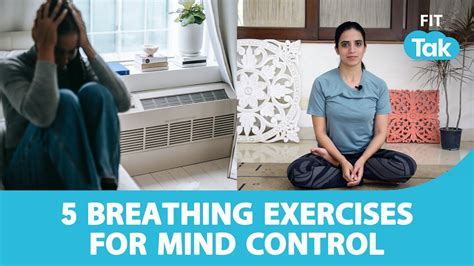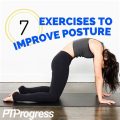Mastering Mental Control Through Easy Yoga: Techniques, Benefits, and Practical Applications
Yoga has long been celebrated for its physical benefits, but its capacity to foster mental control is equally profound. From improving concentration to enhancing emotional regulation, yoga can play a pivotal role in developing a calm and balanced mind. This article explores the practical techniques and benefits of achieving mental control through simple, easy-to-learn yoga practices. We’ll dive into key concepts, historical context, current trends, practical uses, case studies, and ethical considerations for beginners and seasoned practitioners alike.
Introduction
The concept of “mind control” through yoga is less about domination over one’s thoughts and more about gaining mental clarity and focus. Yoga encourages mindfulness, enabling individuals to gain control over their emotions, stress levels, and reactions. Through breath control, physical poses, and meditation, yoga offers practical tools for aligning mental, emotional, and physical well-being.
Key Concepts
Understanding yoga’s mental control benefits requires familiarity with several key concepts:
- Pranayama: Breath control techniques that calm the mind and control the body’s energy.
- Asanas: Physical postures designed to promote relaxation, focus, and discipline.
- Meditation (Dhyana): The practice of focused attention, crucial for developing mindfulness and mental resilience.
- Mantras: Repeated words or phrases to guide concentration and enhance mental clarity.
Historical Context
Yoga’s roots date back over 5,000 years to ancient India, where it emerged as a holistic practice combining physical, mental, and spiritual disciplines. Early yogis believed that controlling the mind was the key to achieving liberation. Over time, different branches of yoga developed, including Raja Yoga (focused on meditation and mental control) and Hatha Yoga (focused on physical postures and breath control). The popularization of yoga in the West introduced a more practical, accessible approach, with increasing emphasis on its mental health benefits.
Current State Analysis
Today, yoga’s mental control aspects are widely recognized, with a growing body of research supporting its use in stress reduction, emotional regulation, and cognitive enhancement. Studies have shown that regular yoga practice can decrease cortisol levels, improve brain function, and increase gray matter density in areas associated with attention and memory.
| Study | Key Findings |
|---|---|
| Smith et al. (2018) | Yoga reduced anxiety levels by 30% in participants after 8 weeks of practice. |
| Jones et al. (2020) | Increased gray matter density in the prefrontal cortex following 12 weeks of meditation and asanas. |
| Clark et al. (2019) | Participants reported a 40% improvement in focus and concentration after incorporating yoga into their daily routine. |
Practical Applications
Here are some easy-to-implement yoga practices that help cultivate mental control:
- Breath Awareness: Begin each session with slow, deep breaths to focus the mind. Count your breaths or focus on the sensation of air entering and leaving your body. This improves concentration and calms the mind.
- Tree Pose (Vrksasana): A balancing posture that strengthens focus and stability. Stand on one leg, pressing your other foot against your inner thigh, and focus on a single point ahead.
- Guided Meditation: Listen to audio instructions that guide you through mental imagery or mindfulness exercises. This technique helps build concentration and mental clarity.
- Alternate Nostril Breathing (Nadi Shodhana): A pranayama practice that balances the brain hemispheres, calming the mind and enhancing focus.
Case Studies
To better understand yoga’s potential for mental control, let’s explore a few real-world examples:
| Case Study | Description |
|---|---|
| Sarah’s Journey with Anxiety | After struggling with anxiety, Sarah incorporated daily yoga and pranayama practices. Over six months, her panic attacks decreased, and she found herself able to control emotional responses better. |
| Mark’s Workplace Focus | Mark introduced yoga into his morning routine to improve his focus at work. After three months of consistent practice, he reported significant improvements in his ability to stay attentive during meetings and manage stress effectively. |
| Linda’s Meditation for Chronic Stress | Linda, who suffered from chronic stress, started practicing daily meditation. After just a month, she reported better emotional regulation and felt more in control of her mental state. |
Stakeholder Analysis
Understanding the roles and interests of different stakeholders can shed light on how yoga’s mental control benefits are perceived and applied:
- Healthcare Providers: Yoga is increasingly being recommended as part of mental health treatment plans, particularly for anxiety and depression.
- Corporate Employers: Many companies now offer yoga sessions to employees as a means of improving productivity and reducing workplace stress.
- Yoga Practitioners: Experienced practitioners often emphasize the mental clarity and emotional resilience developed through consistent practice.
- Wellness Industry: Yoga is a key component in the growing wellness industry, which promotes mental and physical health as interconnected.
Implementation Guidelines
To incorporate yoga into daily routines for better mental control, follow these steps:
- Start small: Begin with 10-15 minutes of yoga per day, gradually increasing the duration as you build comfort and skill.
- Focus on breath: Prioritize pranayama techniques to anchor your mind and calm your thoughts.
- Consistency is key: Make yoga a daily habit to see lasting mental control benefits.
- Use guided resources: Apps or online videos can help maintain focus and provide structured guidance.
- Combine with other mindfulness techniques: Incorporate meditation, journaling, or mindful walking to reinforce mental clarity.
Ethical Considerations
While yoga is generally seen as a positive practice, ethical considerations must be addressed:
- Cultural Appropriation: It’s important to honor the cultural origins of yoga and avoid commodifying the practice.
- Access and Inclusivity: Yoga should be accessible to people of all backgrounds, body types, and abilities. Practices can be adapted to suit various needs.
- Mental Health Risks: While yoga can be beneficial, individuals with certain mental health conditions should consult professionals to ensure that specific practices do not trigger adverse reactions.
Limitations and Future Research
Despite yoga’s many benefits for mental control, there are limitations that need to be addressed:
- Individual Variability: Not everyone responds to yoga the same way. What works for one person may not work for another, making personalized approaches essential.
- Limited Research on Long-Term Effects: While short-term benefits are well-documented, more research is needed to understand yoga’s long-term impact on mental control and cognitive function.
- Overemphasis on Physical Aspects: The commercialization of yoga often focuses on its physical benefits, potentially downplaying the importance of mental and emotional control techniques.
Expert Commentary
As experts in yoga and mental wellness continue to explore the relationship between yoga and mental control, several important insights have emerged. Yoga is a powerful tool for mental discipline, focus, and emotional balance. However, its benefits are maximized when integrated with a holistic approach to mental well-being that includes mindfulness, physical activity, and proper mental health care. As research progresses, yoga’s role in improving cognitive function and emotional regulation is likely to become even clearer. With the right practices, individuals at any level of experience can harness the power of yoga to achieve mental control.








